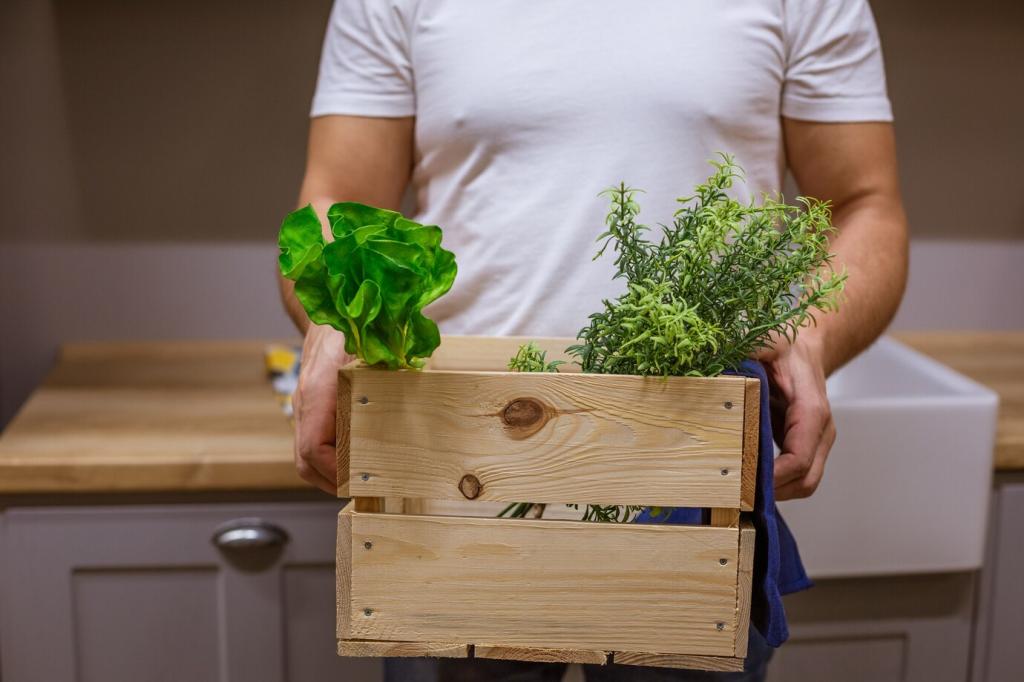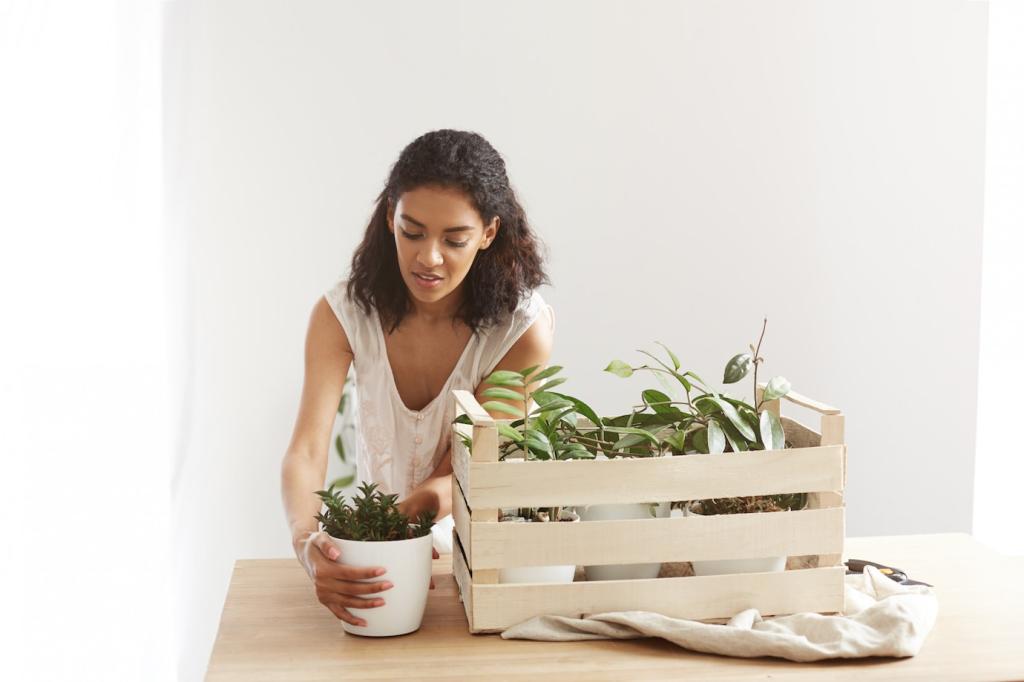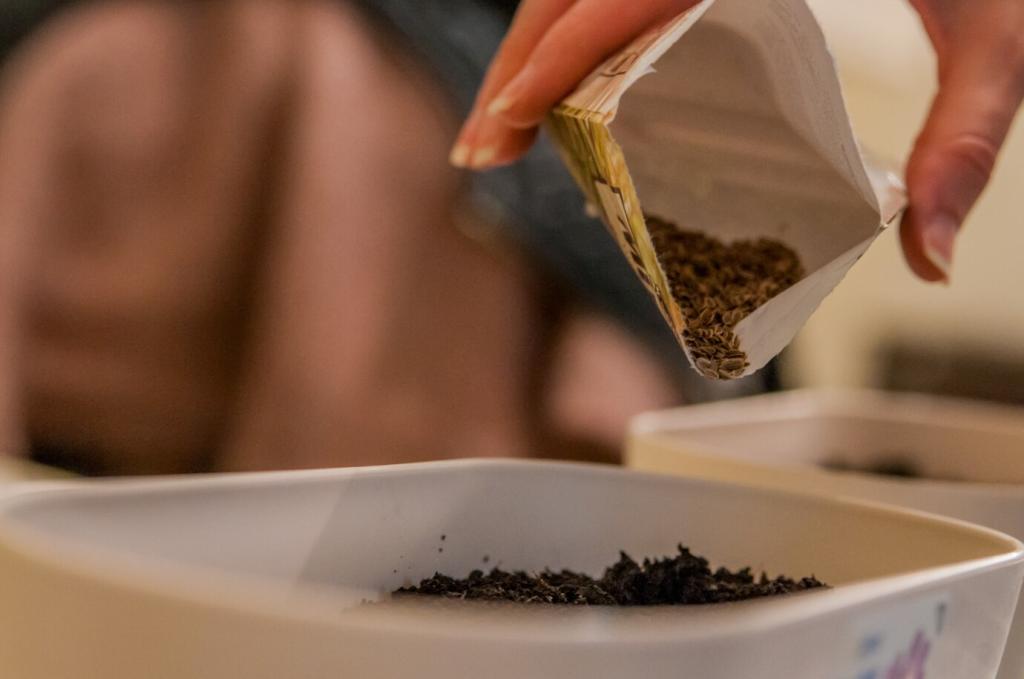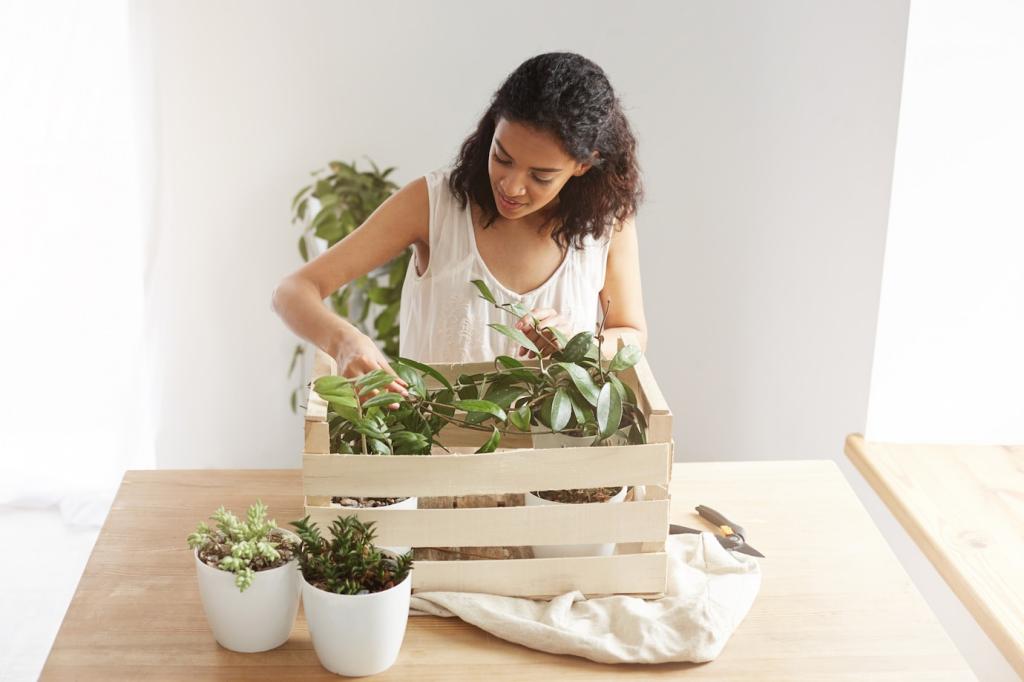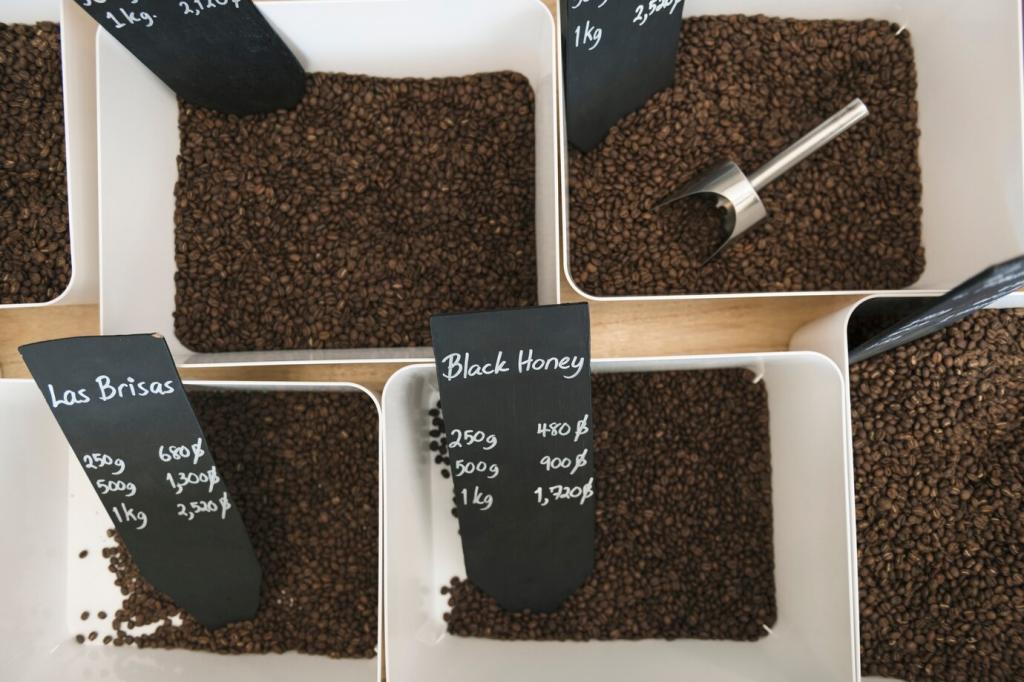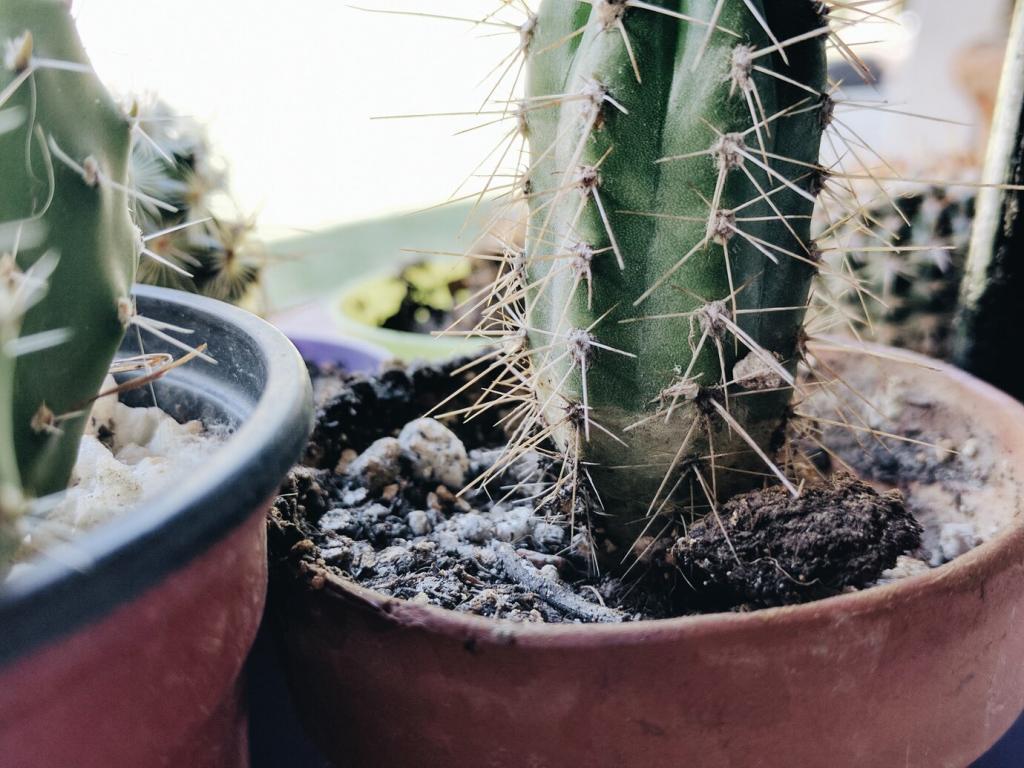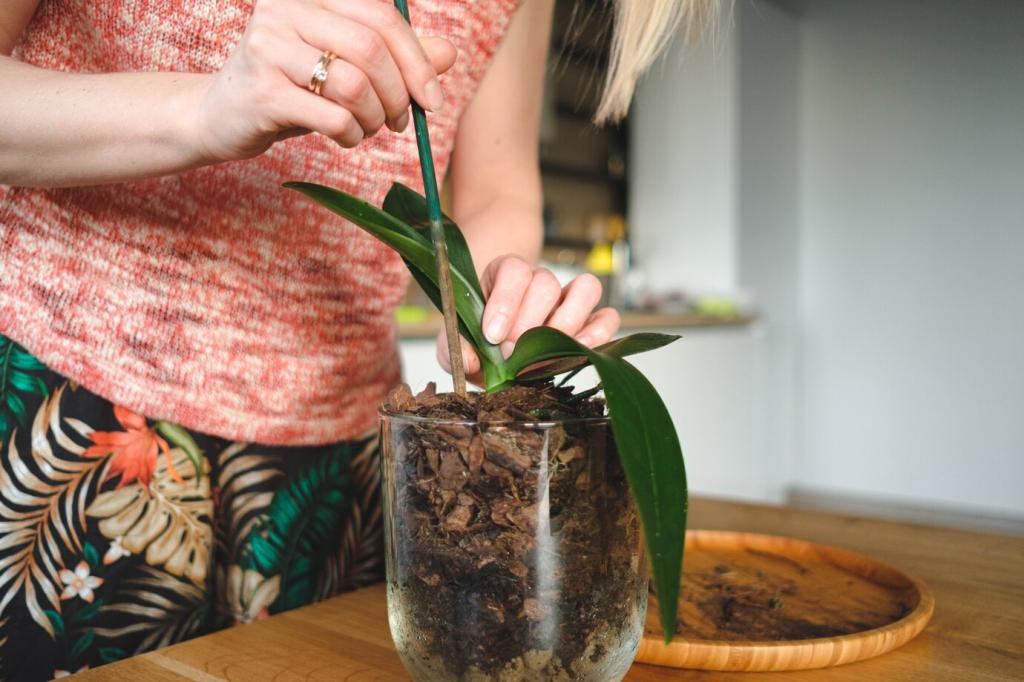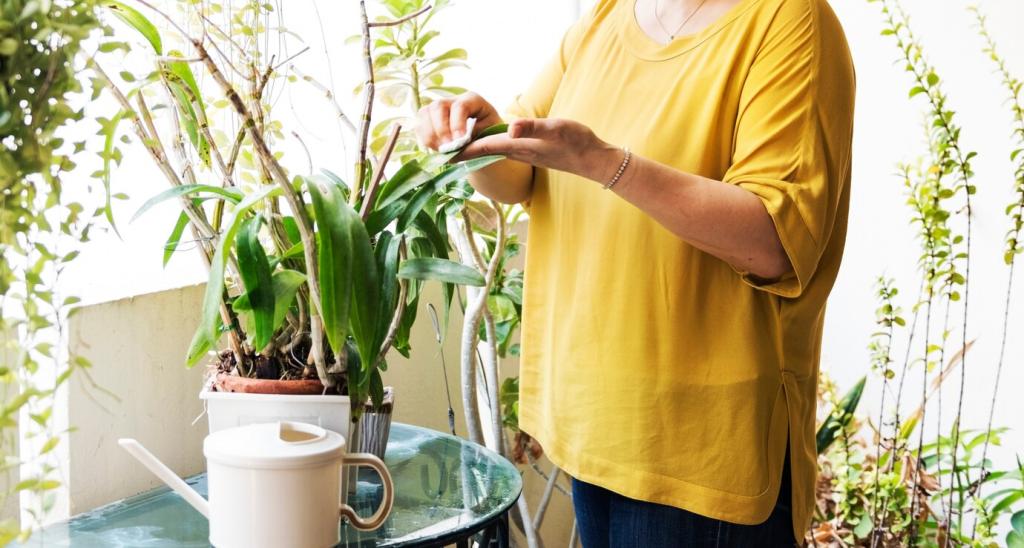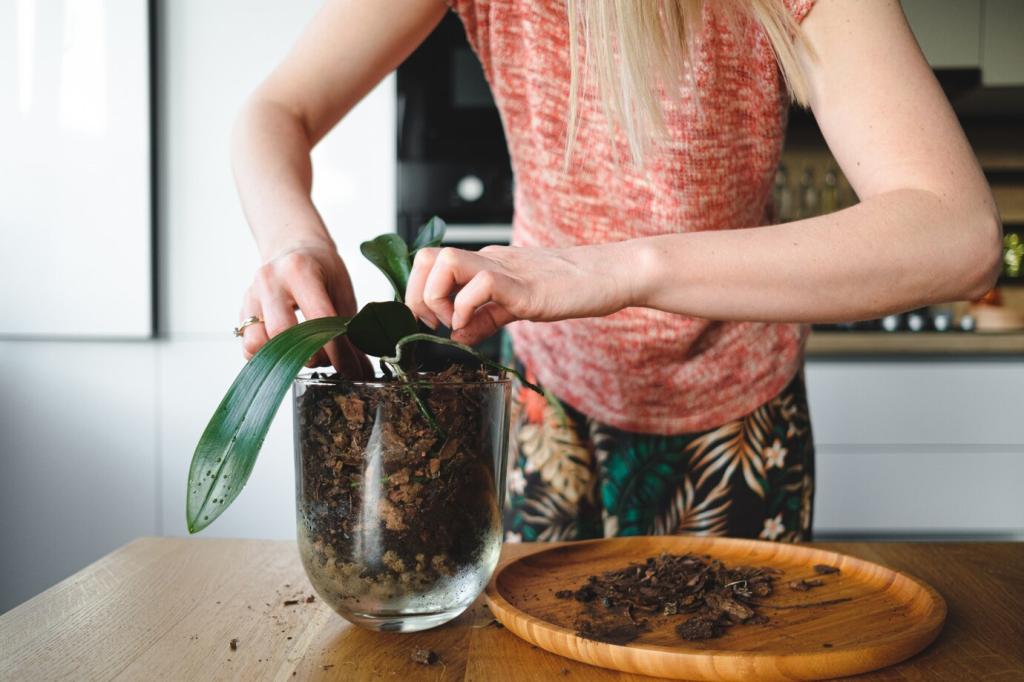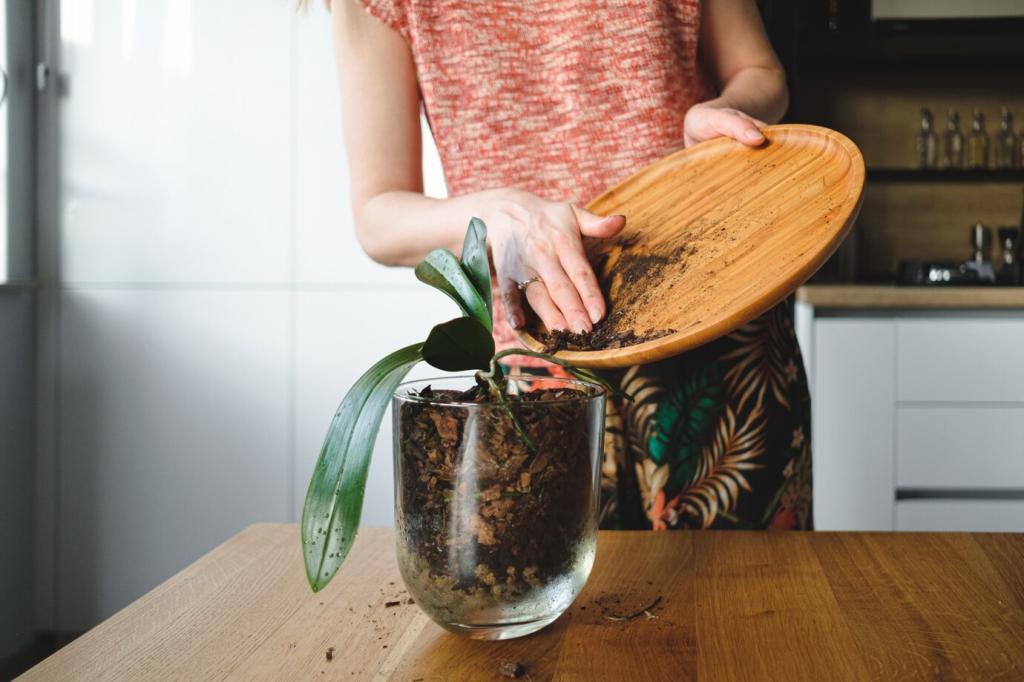Moisture and Air: The Balcony Sponge Test
Grab a handful and squeeze. If only a drop or two emerges and the clump holds loosely, moisture is perfect. If water trickles, fold in shredded cardboard. If it crumbles dust-dry, mist and mix gently.
Moisture and Air: The Balcony Sponge Test
Use a hand fork to lift and fluff from the sides inward, not just stab the middle. This preserves layered airflow while mixing. Light, frequent turns beat occasional deep churns on compact balcony setups.

